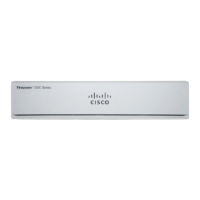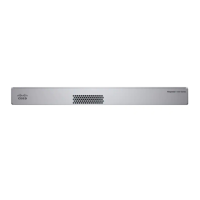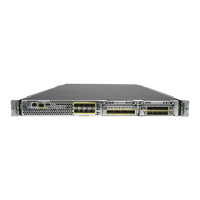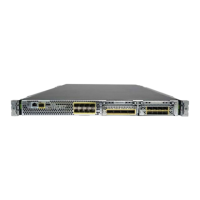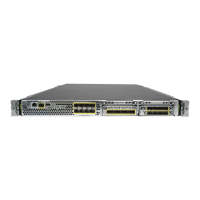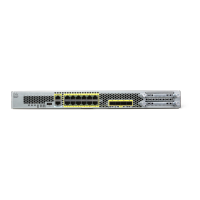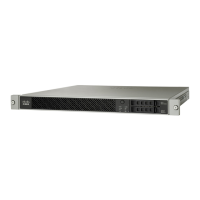Figure 33: Default Route
Step 5 Choose Policies and configure the security policies for the network.
The device setup wizard enables traffic flow between the inside-zone and outside-zone, and interface NAT
for all interfaces when going to the outside interface. Even if you configure new interfaces, if you add them
to the inside-zone object, the access control rule automatically applies to them.
However, if you have multiple inside interfaces, you need an access control rule to allow traffic flow from
inside-zone to inside-zone. If you add other security zones, you need rules to allow traffic to and from those
zones. These would be your minimum changes.
In addition, you can configure other policies to provide additional services, and fine-tune NAT and access
rules to get the results that your organization requires. You can configure the following policies:
• SSL Decryption—If you want to inspect encrypted connections (such as HTTPS) for intrusions, malware,
and so forth, you must decrypt the connections. Use the SSL decryption policy to determine which
connections need to be decrypted. The system re-encrypts the connection after inspecting it.
• Identity—If you want to correlate network activity to individual users, or control network access based
on user or user group membership, use the identity policy to determine the user associated with a given
source IP address.
• Security Intelligence—Use the Security Intelligence policy to quickly drop connections from or to
blacklisted IP addresses or URLs. By blacklisting known bad sites, you do not need to account for them
in your access control policy. Cisco provides regularly updated feeds of known bad addresses and URLs
so that the Security Intelligence blacklist updates dynamically. Using feeds, you do not need to edit the
policy to add or remove items in the blacklist.
• NAT (Netw orkAddressTranslation)—Use the NAT policy to convert internal IP addresses to externally
routeable addresses.
• Access Control—Use the access control policy to determine which connections are allowed on the
network. You can filter by security zone, IP address, protocol, port, application, URL, user or user group.
You also apply intrusion and file (malware) policies using access control rules. Use this policy to
implement URL filtering.
Cisco Firepower 1010 Getting Started Guide
110
Threat Defense Deployment with the Device Manager
Configure the Firewall in the Device Manager
